Crypto Academy / Season 3 / Week 4 - Homework Post for Prof. @awesononso
Hello everyone,
Hope we are all doing great? Am so happy to be part of this week's class. Topic: "Blockchain Forks". I read and understood the topic and I will be answering some questions that were given from the topic by Prof. @awesononso without wasting our time. Please, follow me as I take you on the journey.
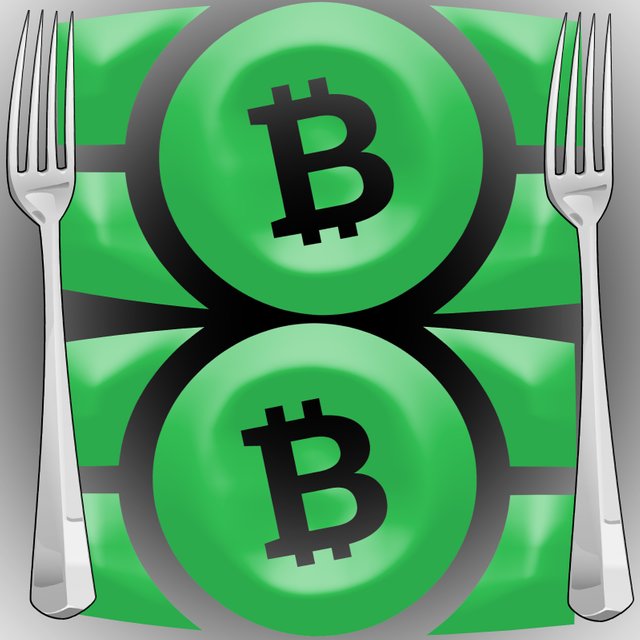 source
source

Definition of forks according to what I read from the class, is an upgrade or change that occurs in the blockchain protocol. It can also be said to be things that occur when a blockchain separates into two potential paths forward.
Change can occur at any time in the blockchain protocol because the code source is open and also to be able to meet or accommodate ever-growing human expectancies. That is, Human thinks of different things to be added and they will never be satisfied. That is why change can occur at any time because the developers can decide to add a change to the blockchain after when the miners buy into the idea. Furthermore, the developers alone can not make any change without the agreement of the full nodes. This is because the blockchain is decentralized in nature. That is, It is not controlled by one authority.
Blockchain forks are of two different types. Which are Hard forks and soft forks. I will be discussing the two forks in the below question giving to me by professor.
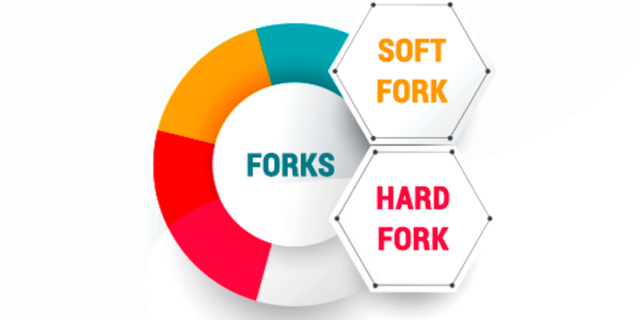 source
source

Hard forks can be defined as a radical change that occurs in the blockchain that results in dividing or splitting the blockchain into two. One of which is the previous or old one with the original protocol while the second is the one with the new rules.
Furthermore, A hard fork in this type of blockchain, Is when the nodes of the new version with new rules no longer accept the old version of blockchain. The new blockchain is created in a unique and updated way that the old one can not be compatible with the new one. The new one sees the old one as invalid while the old one also sees the new one as invalid and this creates a very huge permanent separation between the two. So, this type of fork is regarded as Backward Incompatible.
Hard forks result in the creation of the new currency in the blockchain. Both blockchain, the first which is with the original protocol and the newest one still share some common history but they move parallel to each other post-fork. Since they both share some common history, there is the possibility for the holder of the coin on the old blockchain can also hold the coin on the new blockchain.
Ethereum Classic (ETC) is an example of a hard fork. It was created due to Ethereum's core developer and community that philosophically opposed Decentralized Autonomous Organization (DAO) to preserve its nature of immutability. (DAO) is a fork of ethereum that was created to reverse the effects of a hack that occurred in one of their applications.
The minority of the community that stayed behind and didn't upgrade their software continues to mine ETC - Ethereum Classic. Even since the majority of the community transmitted to the new chain, the original logo is still retained. The minority supporting the old blockchain was given the term Ethereum classic.


Soft forks are a type of fork that is Backward Compatible with older versions. They are forks that bring upgrades to the blockchain without any division or separation. Unlike hard forks that result in dividing the blockchains.
This means that the older version will still be valid and will be able to participate in validating and verifying transactions. On the other hand, the older blocks will also still regard the new rules as valid.
A soft fork is different from a hard fork, it has an opposite function compared to a hard fork. Both the new and old have some common history together and a common direction post-fork. Soft forks do not require nodes to upgrade or create a new protocol and to be able to operate on the network. The old nodes and upgraded one can still work together to create new blocks.
An example of a soft fork is when there is a new rule in the blockchain that states that the block size will be changed from the current 1MB (1,000kB) to 2000kB (2MB). The Non-upgraded participants will continue to see that the incoming new transactions are valid. The old ones will not be cut off, but the issue is that, when non-upgraded miners try to mine new blocks, their blocks and efforts will be rejected by the network.


As I have mentioned earlier, we can see there is a clear difference between the two (Soft Forks and Hard Forks). I will be writing below some differences.
| Hard Forks | Soft Forks |
|---|---|
| Two blockchain (Old and New versions) exist side by side. | Only one blockchain will remain valid as users adopt the upgrades. |
| It results in creating a new cryptocurrency. | No creation of any new currency but an update of the existing block. |
| It creates a complete split of chains. | There is no complete split of chains. |
| It is regarded as backward incompatible. | It is regarded as backward compatible. |

Explain the following Bitcoin Forks and explore the blockchain where necessary. Indicate if they are hard forks or soft forks;
- Bitcoin Cash
- Segregated Witnesses

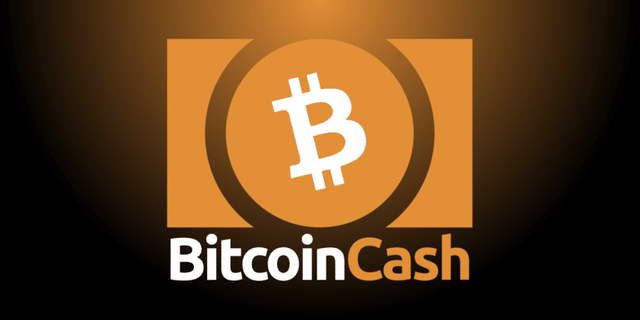 source
sourceBitcoin Cash
Bitcoin cash is a cryptocurrency, a Fork of Bitcoin. Bitcoin cash was a chain that was built on the bitcoin blockchain before it split from the bitcoin blockchain. The main aim that brings about the creation of bitcoin cash was to increase the block size and to accommodate more transactions.
After when the fork occurred, the two blockchain became two different cryptocurrencies from the activation block forward. The old one with the original protocol which is Bitcoin became invalid to Bitcoin cash. While the newest one which is bitcoin cash became invalid to Bitcoin. The two blockchain are now incompatible, You can not send Bitcoin Cash to the Bitcoin Blockchain or Bitcoin blockchain to Bitcoin cash, the chains are not compatible.
Segregated Witness
The Segregated witness which is also known (SegWit), is an example of a Bitcoin soft fork. It came to existence to reduce the size of a Bitcoin transaction to increase the number of transactions that can be contained in a block, by changing the format in which the transaction was created.
 source
source

Hive is a fork of the steem blockchain. It was fork from blockchain after when TRON announced its hostile takeover of Steem. When this was announced, Some witnesses agree while some disagree. Hive was fork from steem or was created as a result of an agreement within a specific number of witnesses who did not agree with a few changes in the leadership.
Since the blockchain is decentralized and not centralized, the witness made their decision and decided to create Hive. Steem blockchain and Hive are similar because Hive is a fork of Steem blockchain, except for a few soft forks by both chains. Such as the currencies deceived by the users.
I will be showing us the similarities of the two (Steem and Hive), Genesis blockchains (Steem and Hive),
To check the steem Genesis blockchain, we need to visit https://steemworld.org/. Log in with your username and posting key. Click on Block Explorer,
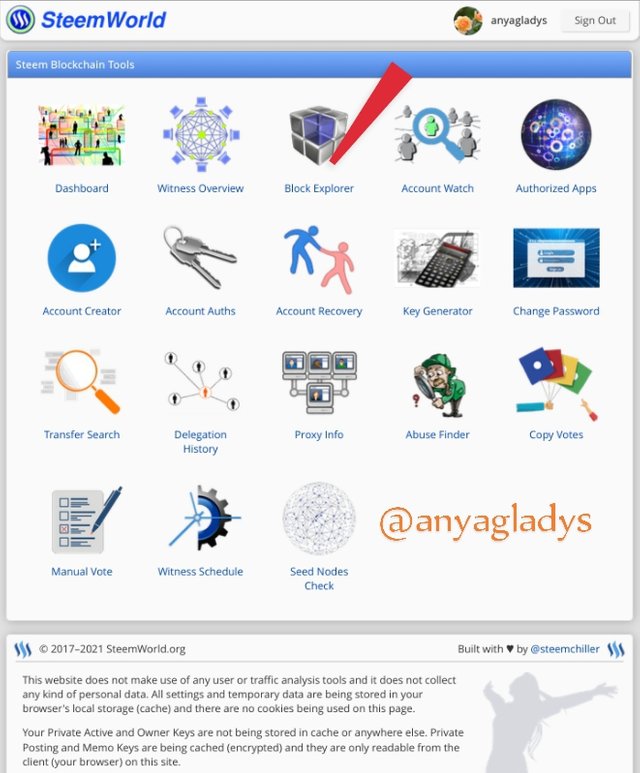
After when you've clicked on it, it will lead you to a page where steem blockchain can be checked. Search for 1 in the block.

After that, Steem Genesis Block will be displayed. As you can see below.
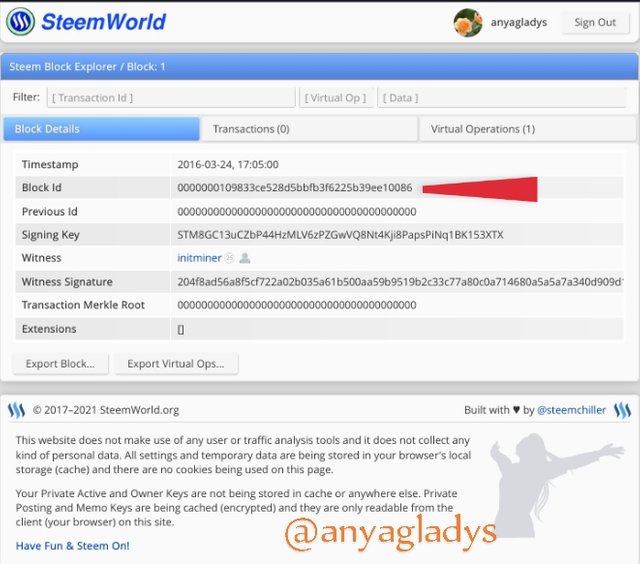
The second Genesis block to check now is the Hive Genesis block. To check the Hive Genesis block, visit https://hiveblocks.com, then input 1 in the search box to search for the first blockchain.
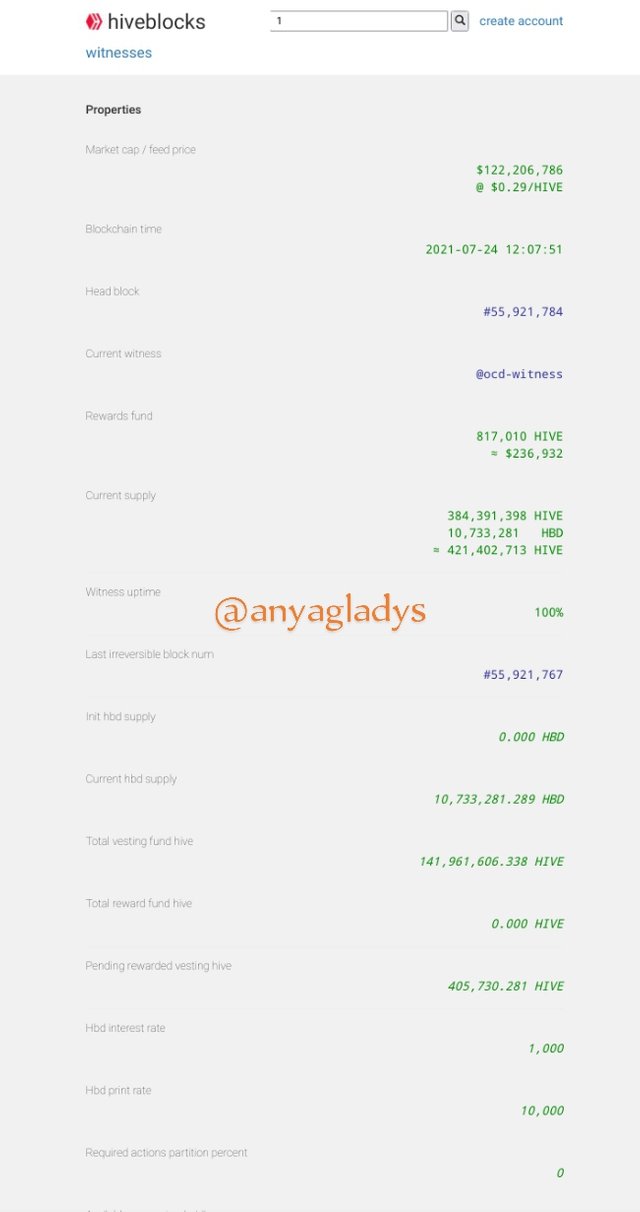
After when you've searched for 1 in the search box, the result of it will be the image below.
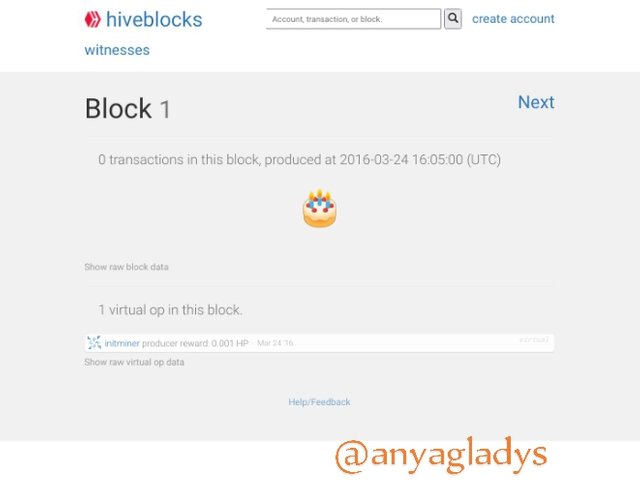
Steem and Hive has the same Genesis block and the witnesses also is the same. This is because they both share the same history and also because Hive is a Fork of Steem blockchain.
In conclusion, Hard forks and soft forks are completely different from one another. Hard forks result in a complete split of chains, while There is no complete split of chains in soft forks but an upgrade of the existing block.
I want to say a very big thank you to Prof. @awesononso for bringing up this topic, I has added to my knowledge, and to those that will be viewing my post, thank you.
Hello @anyagladys,
Thank you for taking interest in this class.
Unfortunately, this account has been blacklisted and therefore is not eligible to perform tasks in the academy.
How, what did I do?
Sir, this is the message I was sent based on the mistake I made using some content without referencing. I was only warned, wish I have always been careful of anything am using in my content ever since then.
Below is what I was sent for the first time and even after that, I have been doing Crypto academy homework without any complaint. So, pls sir I want you to check very well and confirm it, sir.
Sir @awesonoso, pls I don't know why my account is suddenly blacklisted in the cryptoacademy.